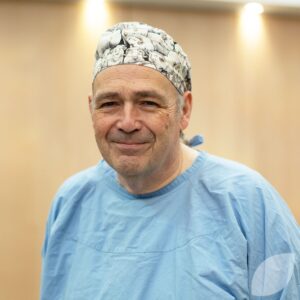Rhabdomyosarcomas (RMSs) are a rare form of sarcomacancer arising from bones and/or soft tissue that develops in muscles. It is the most common soft tissuetissue/the material that joins, holds up or surrounds inside body parts such as fat, muscle, ligaments and lining around joints sarcoma in children and adolescents.
There are two kinds of muscle cellsthe basic structural and functional unit of all living things: smooth muscle cells and skeletal muscle cells. Smooth muscle cells are responsible for involuntary movement, and are found within organs, glands and bloodthe red bodily fluid that transports oxygen and other nutrients around the body vessels. They aid in food digestion, pumping blood throughout the body, urine flow and pregnancy contractions. Cancera disease where abnormal cells split without control and spread to other nearby body tissue and/or organs that originates from smooth muscles is called leiomyosarcoma. In contrast, skeletal muscle cells are responsible for voluntary movement, and are attached to the bones in the body. They enable movement by contracting and relaxing in response to voluntary messages sent by the brain. Cancer that originates in skeletal muscle cells is called rhabdomyosarcoma (RMS).
RMS is slightly more common in males, and is often diagnosed in children under 10 years old. However, this disease can develop in anyone.
Types of Rhabdomyosarcoma
There are four main types of RMS, which are classified by how the cancer cells look under the microscope.
Embryonal Rhabdomyosarcoma (ERMS)
Embryonal RMS (ERMS) is the most common subtype of rhabdomyosarcoma, and generally affects children under five years of age. It is most commonly found in the head, neck or genitourinary organs, but can occur anywhere in the body. There are two common subtypes of EMRS.
Botryoid Embryonal Rhabdomyosarcoma
Botryoid (meaning a bunch of grapes) EMRS is a rare type of tumoura tissue mass that forms from groups of unhealthy cells that is named for their distinctive grape-like appearance. It is most commonly found in the walls of the vagina or bladdera hollow, muscular sac in the pelvis that stores urine in female infants and young girls. While this subtype can be aggressive, the prognosisto predict how a disease/condition may progress and what the outcome might be can be good when caught early.
Spindle-Cell Embryonal Rhabdomyosarcoma
Spindle-cell EMRS is a rare type of tumour that is named for their spindle (long and slender) appearance. It is most commonly found in the paratesticular region (area around the testis and spermatic cord) of males under the age of one. This subtype is generally considered less aggressive, and can have a good prognosis.
Alveolar Rhabdomyosarcoma (ARMS)
Alveolar rhabdomyosarcoma (ARMS) is a less common type of rhabdomyosarcoma that generally affects kids over five years old and teenagers. This type of tumour is named for their clustered appearance, much like alveoli in the lungs. It is most commonly found in the muscles of the arms, legs, chest or abdomenstomach, stomach area, belly. ARMS can be aggressive, and may not have as good of a prognosis as ERMS.
Anaplastic Rhabdomyosarcoma
Anaplastica term used to describe abnormal cancer cells that grow uncontrollably in the body and have little or no resemblence to regular cells rhabdomyosarcoma, also known as pleomorphicmany forms; cells that have different size, shape etc. rhabdomyosarcoma, is the least common subtype of this disease. It is mainly found in adults, and is considered very rare in children. Anaplastic rhabdomyosarcoma is often considered aggressive, but can have a good prognosis when caught early.
Treatment
If a rhabdomyosarcoma is detected, it will be staged and graded based on size, metastasiswhen the cancer has spread to other parts of the body, also known as mets, and how the cancer cells look under the microscope. Stagingthe process of determining how big the cancer is, where it started and if it has spread to other areas and grading helps your doctors determine the best treatment for you.
Cancers can be staged using the TNM staging system:
- T (tumour) indicates the size and depth of the tumour.
- N (nodea small lump or mass of tissue in your body) indicates whether the cancer has spread to nearby lymph nodessmall bean-shaped structures that filters harmful substances from lymph fluid.
- M (metastasis) indicates whether the cancer has spread to other parts of the body.
This system can also be used in combination with a numerical value, from stage 0-IV:
- Stage 0: this stage describes cancer cells in the place of origin (or ‘in situ’) that have not spread to nearby tissuea group of cells that work together to perform a function.
- Stage I: cancer cells have begun to spread to nearby tissue. It is not deeply embedded into nearby tissue and had not spread to lymph nodes. This stage is also known as early-stage cancer.
- Stage II: cancer cells have grown deeper into nearby tissue. Lymph nodes may or may not be affected. This is also known as localisedaffecting only one area of body cancer.
- Stage III: the cancer has become larger and has grown deeper into nearby tissue. Lymph nodes are generally affected at this stage. This is also known as localised cancer.
- Stage IV: the cancer has spread to other tissues and organs in the body. This is also known as advancedat a late stage, far along or metastatic cancer.
Cancers can also be graded based on the rate of growth and how likely they are to spread:
- Gradea description of how abnormal cancer cells and tissue look under a microscope when compared to healthy cells I: cancer cells present as slightly abnormal and are usually slow growing. This is also known as a low-grade tumour.
- Grade II: cancer cells present as abnormal and grow faster than grade-I tumours. This is also known as an intermediate-grade tumour.
- Grade III: cancer cells present as very abnormal and grow quickly. This is also known as a high-grade tumour.
Once your tumour has been staged and graded, your doctor may recommend genetic testinga procedure that analyses DNA to identify changes in genes, chromosomes and proteins, which can be used to analyse tumour DNA to help determine which treatment has the greatest chance of success, which analyses your tumour DNA and can help determine which treatment has the greatest chance of success. They will then discuss the most appropriate treatment option for you.
Treatment is dependent on several factors, including age, subtype, location and stage of disease.
Treatment options for rhabdomyosarcomas may include:
- Surgerytreatment involving removal of cancerous tissue and/or tumours and a margin of healthy tissue around it to reduce recurrence, potentially including a wide local excisionremoval of cancerous tissue and a margin of healthy tissue around it to prevent cancer recurrence.
- Chemotherapya cancer treatment that uses drugs to kill or slow the growth of cancer cells, while minimising damage to healthy cells.
- Radiation therapya treatment that uses controlled doses of radiation to damage or kill cancer cells.
- Immunotherapya treatment that uses a person's immune system to fight cancer.
- Targeted therapymedication that targets specific molecular features of cancer cells.
- Clinical trialsresearch studies performed to test new treatments, tests or procedures and evaluate their effectiveness on various diseases.
- Palliative carea variety of practices and exercises used to provide pain relief and improve quality of life without curing the disease.
Risk factors
While the cause of rhabdomyosarcoma remains unknown, the following factors may increase your riskthe possibility that something bad will happen of developing the disease:
- Certain genetic conditions, such as:
- Li-Fraumeni syndrome.
- Beckwith-Wiedemann syndrome.
- Neurofibromatosis type 1 (NF1).
- Costello syndrome.
- Noonan syndrome.
- Having a family history of cancer.
Not everyone with these risk factors will develop the disease, and some people who have the disease may have none of these risk factors. See your general practitioner (GP) if you are concerned.
Symptoms
As rhabdomyosarcoma can develop anywhere in the body, the symptoms will vary based on the location of the tumour.
Head and Neck Rhabdomyosarcomas
Symptoms of a rhabdomyosarcoma in the head and neck region may include:
- Headache.
- Bulging and/or swelling of the eyes.
- Unusual bleeding in the nose, throat and/or ears.
- A lump in the affected region.
- Pain and/or redness in the affected area.
- Earache.
- Sinus congestion.
- Unexplained weight loss.
- Fatiguea state of extreme tiredness or exhaustion, can be physical or mental.
Urinary and Reproductive Systems Rhabdomyosarcomas
Symptoms of a rhabdomyosarcoma in the urinary and reproductive system may include:
- Difficulties urinating.
- Haematuriathe presence of blood in urine.
- Difficulties with bowelportion of the digestive system that digests food (small bowel) and absorbs salts and water (large bowel); also called intestines movements.
- Unusual bleeding from the vagina and/or rectumthe last section of the large intestine/bowel that holds waste until it is ready to be removed from the body.
- Pain and/or redness in the affected area.
- A lump in the affected region.
- Unexplained weight loss.
- Fatigue.
Abdominal and Pelvic Rhabdomyosarcomas
Symptoms of a rhabdomyosarcoma in the abdomen or pelvis may include:
- Vomiting.
- Abdominal pain.
- Jaundiceyellowing of the skin and the whites of the eyes – only in tumours of the bile ducts.
- Unexplained weight loss.
- Fatigue.
- Lump in the affected region.
- Bone pain.
Rhabdomyosarcomas of the Back, Arms and Legs
Symptoms of a rhabdomyosarcoma in the back, arms and legs may include:
- Swelling in the affected area.
- Lump in the affected area.
- Bone pain.
- Fatigue.
- Unexplained weight loss.
Not everyone with the symptoms above will have cancer but see your general practitioner (GP) if you are concerned.
Diagnosis
If your doctor suspects you have a rhabdomyosarcoma, they may order the following tests to confirm the diagnosisthe process of identifying a disease based on signs and symptoms, patient history and medical test results and refer you to a specialist for treatment:
- Physical examinationan examination of your current symptoms, affected area(s) and overall medical history.
- Imagingtests that create detailed images of areas inside the body tests, potentially including:
- X-raya type of medical imaging that uses x-ray beams to create detailed images of the body .
- CT (computed tomography) scana type of medical imaging that uses x-rays and computer technology to create detailed images of the body.
- MRI (magnetic resonance imaging)a type of medical imaging that uses radiowaves, a strong magnet and computer technology to create detailed images of the body.
- PET (positron emission tomography) scana type of medical imaging that uses radioactive tracers to create detailed images of the body.
- Bone scana type of medical imaging that uses a radioactive tracer to detect bone conditions or abnormalities.
- Blood teststesting done to measure the levels of certain substances in the blood.
- Lumbar puncturea procedure that involves inserting a needle between two vertebrae in the lower spine and extracting a sample of cerebrospinal fluid (CSF) for analysis.
- Bone marrow aspirationa procedure that involves inserting a needle into the hipbone (or the breastbone in some cases) to remove samples of solid and liquid bone marrow.
- Biopsyremoval of a section of tissue to analyse for cancer cells.







